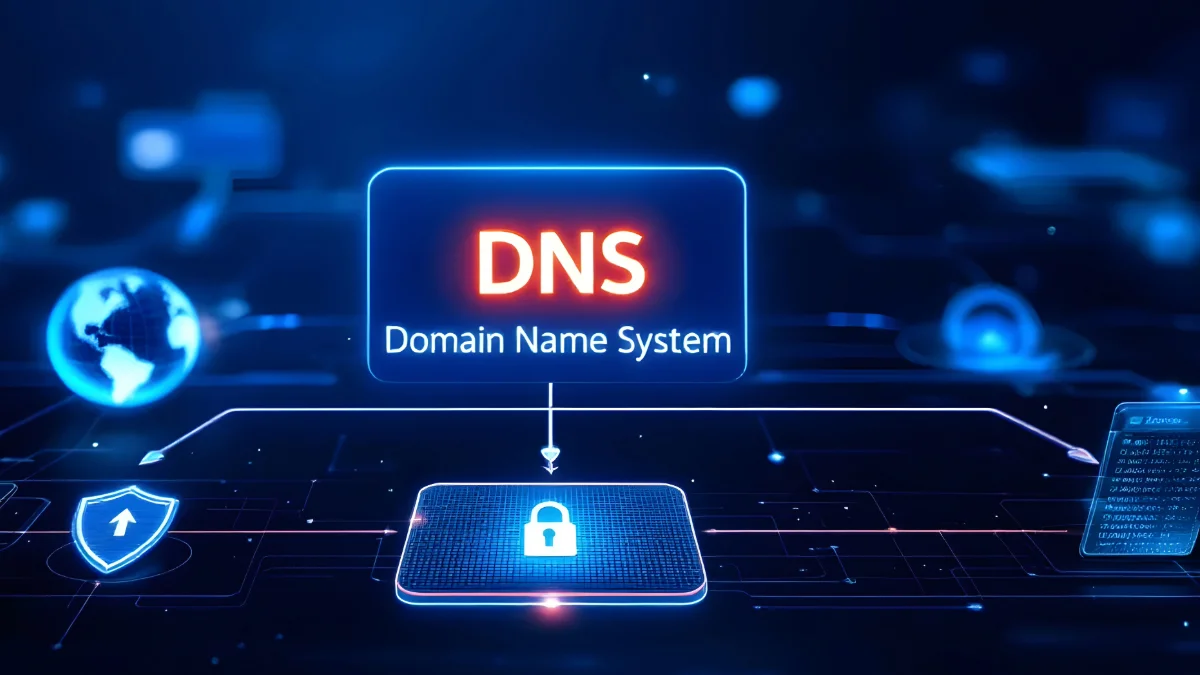1.
What Is a Server?
Servers—unseen heroes shaping our internet experience—are the focus of this article. Here, you’ll find detailed answers to questions such as: What is a server? How does it function? What types exist? What should be considered when selecting a server? And how can server management be handled using cloud systems? Welcome to your guide: the answer to the question what is a server.
A web server is a specialized computer that supplies data, services, or resources to other devices or software. Every second, millions of internet users submit various requests to servers worldwide. A server’s role is to respond to these incoming requests. This process occurs in mere milliseconds. For instance, when you enter a request in your browser, it sends a query to the connected server. The server retrieves the corresponding data and delivers it to you. This applies not only to web pages; servers are also engaged when you share files, send emails, manage databases, or launch applications.
Servers are typically equipped with powerful processors, substantial memory, and advanced cooling systems. After all, they are designed to operate continuously—24/7—to serve numerous users simultaneously. In today’s digital landscape, servers are more than just physical machines. Thanks to virtualization and cloud technologies, it is possible to run multiple virtual web servers on a single physical hardware. This setup offers users flexibility, scalability, and cost-effectiveness.
2.
What Types of Servers Are There?
- Web Server: Hosts web pages and delivers content over HTTP/HTTPS protocols to clients.
- Database Server: Stores, queries, and manages data, typically integrated with applications.
- File Server: Allows users on a network to share and store files in a centralized location.
- Application Server: Executes the business logic of web applications, acting as a bridge between the database and the client interface.
- DNS Server: Translates domain names into IP addresses, enabling users to navigate to websites.
You may also be interested in our article titled “What is DNS and How Does it Work?”
3.
How Does a Server Work?
Curious about how a server operates? Here is a step-by-step breakdown:
- The user (client) initiates a request (e.g., access to a website).
- The request travels over the Internet to the relevant server.
- The server detects the incoming request and determines what actions are required.
- If needed, it retrieves data from a database or file system.
- The server generates a response—such as a web page—and sends it back to the client.
- The client processes and displays the response via a browser, application, or device.
4.
Physical Server vs. Virtual Server
Continuing our exploration of “what is a server,” here’s a comparison between physical and virtual servers. A physical server refers to tangible hardware located in a data center or on-premises infrastructure, fully dedicated to a single user or workload. These servers are ideal for high-performance, resource-intensive tasks due to dedicated resources and hardware control.
In contrast, a virtual server is a digitally isolated instance created on a physical server using virtualization technologies such as a hypervisor. This enables multiple virtual servers to operate on a single physical machine, offering efficient resource utilization, on-demand scalability, and cost benefits.
In summary, physical servers provide enhanced control and dedicated hardware, while virtual servers excel in flexibility, ease of management, and high availability. Especially within cloud infrastructure, using virtual servers has become almost standard practice.
5.
How Cloud Servers Differ from Traditional Servers
Virtualization technologies mentioned earlier support the deployment of cloud servers that run on physical hardware yet present a completely abstracted interface to the user. Accessible over the Internet, cloud servers offer significant advantages over traditional physical servers. These include:
- Deployment and provisioning are much faster, requiring no physical interaction.
- Resources can be scaled up or down dynamically based on demand.
- Users remain independent of specific hardware, enabling geographical flexibility.
- High availability and automated backups minimize the risk of data loss.
- Maintenance and hardware costs are handled by the service provider, reducing operational burden.
- Security measures can be centrally managed and continuously updated.
- Pay-as-you-go pricing enables cost optimization based on usage.
6.
Key Considerations When Choosing a Server
In our topic “what is a web server,” we also address guidelines for selecting the right server. Choosing an appropriate server structure requires evaluating critical factors such as performance, security, scalability, and cost—regardless of whether your needs involve a small website or a high-traffic application. First, analyze required resources like CPU power, memory, and storage. If uninterrupted service is essential, consider high availability, load balancing, and backup capabilities. For growing traffic demands, opt for scalable solutions. Security is also imperative—especially for systems handling sensitive information—with integration of firewalls, DDoS protection, encryption, and access control. Lastly, evaluate the management overhead and technical expertise needed. Managed servers or cloud-based solutions offer practical alternatives for organizations lacking dedicated infrastructure teams.
7.
Server Management: Manual or Managed?
Businesses have two options for server management: self-managed or provider-managed. In manual management, your technical team handles server setup, maintenance, updates, and security. This approach offers control but demands high technical expertise and time investment. On the other hand, managed server services outsource infrastructure and management responsibilities to expert providers, allowing clients to focus solely on usage and business operations. Especially for organizations with limited technical resources, managed services present an ideal solution—offering 24/7 support, automated backups, and regular security updates.
We recommend checking out our article What Is a Data Breach? for more insights.
8.
Frequently Asked Questions
What does “Server empty response” mean?
Indicates that the server did not provide any response, often meaning the server is unresponsive or there is a connection issue.
What does “No response from server” mean?
Denotes that the server did not return a response; the server may be offline, overloaded, or access is blocked.
What does “There was a problem with the server 400” mean?
Refers to an HTTP 400 error, meaning the server could not understand the request due to malformed syntax.
What does “Unable to connect to the remote server” mean?
Indicates that a connection to the remote server could not be established—potentially due to network issues, server downtime, or access restrictions.
What does “Radius server is not responding” mean?
Means the RADIUS server did not respond, resulting in failed authentication.
What does “Server under maintenance” mean?
Signals that the server is undergoing maintenance and is temporarily unavailable.
What does “Server identity cannot be verified” mean?
Means the server's identity could not be confirmed, which may pose a security risk.
What does “Server registered” mean?
Indicates that the server has been successfully registered in the system or network and is active.
What does “Invalid Server URL” mean?
Means the entered server address is invalid or formatted incorrectly.




























